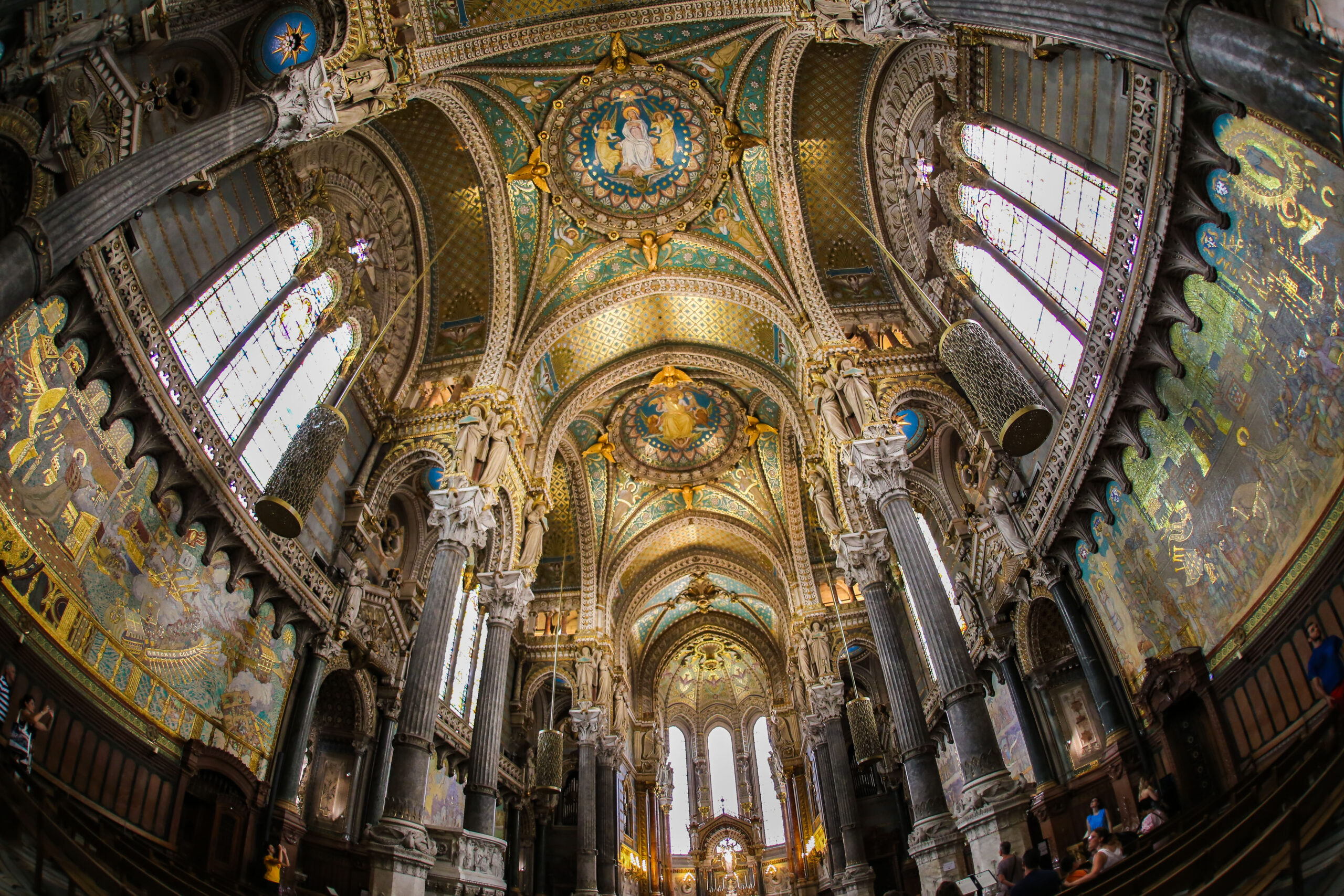Architectural photography offers a unique opportunity to capture the grandeur and intricate details of magnificent structures. One of the most exciting tools in an architectural photographer’s arsenal is the fish-eye lens. This ultra-wide-angle lens can transform the way you perceive and photograph buildings, adding a dynamic and immersive quality to your images.
Using a fish-eye lens for architectural photography, as seen in the stunning image of the Basilica of Notre-Dame de Fourvière in Lyon, opens up a world of creative possibilities. The lens’s distinctive curvature effect allows you to capture the entirety of grand interiors, from floor to ceiling, in a single frame. This perspective not only highlights the vastness of the space but also emphasizes the intricate details of the architecture that might otherwise go unnoticed.

In the case of the Basilica of Notre-Dame de Fourvière, the fish-eye lens brings out the elaborate ceiling mosaics and the towering columns in a dramatic way. The ceiling, with its intricate gold, green, and blue patterns, forms a captivating dome that draws the viewer’s eye upwards, while the curved lines created by the lens add a sense of depth and dimensionality to the photograph. The statues perched atop the columns and the vibrant stained glass windows are all encompassed in the shot, providing a comprehensive view that standard lenses might struggle to achieve.
One of the key advantages of using a fish-eye lens in architectural photography is its ability to exaggerate the spatial relationship within a scene. This exaggeration can be particularly effective in capturing the expansive interiors of cathedrals, palaces, and other monumental buildings. The lens creates a sense of immersion, making viewers feel as though they are standing right in the middle of the space, surrounded by its beauty and grandeur.
However, using a fish-eye lens also requires a thoughtful approach to composition. The curvature effect can sometimes distort lines and shapes, making it crucial to position yourself and your camera carefully to achieve a balanced and harmonious composition. In architectural photography, where symmetry and precision are often key, experimenting with different angles and heights can help you find the perfect shot that balances the artistic distortion with the architectural integrity of the subject.
When photographing with a fish-eye lens, pay close attention to the light and how it interacts with the architecture. The wide field of view can capture light from multiple sources, creating a rich interplay of shadows and highlights. This can enhance the textures and details of the architectural elements, bringing them to life in your photographs. For instance, the light filtering through the stained glass windows of the Basilica of Notre-Dame de Fourvière adds a kaleidoscope of colors that dance across the interior surfaces, creating a dynamic and captivating image.
In conclusion, the fish-eye lens is a powerful tool for architectural photography, offering a unique perspective that can capture the grandeur and intricate details of magnificent structures. Whether you are photographing the ornate interiors of a historic basilica or the sweeping lines of modern architecture, the fish-eye lens can help you create images that are both immersive and visually striking. By mastering this lens, you can unlock new creative potential and bring a fresh, dynamic edge to your architectural photography.
Leave a Reply